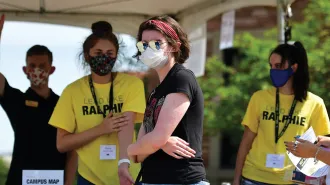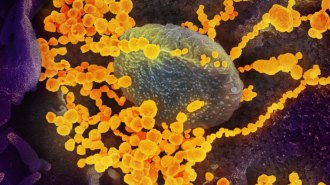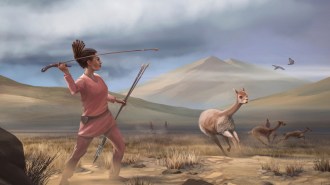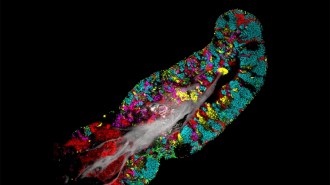Search Results

COVID-19 On Campus
In this guide, students will learn about strategies that five universities used to monitor coronavirus cases on campuses, analyze the strategies’ effectiveness at minimizing spread and reflect on the strategies used at their own school.
COVID-19 lessons for colleges
Students will explore and analyze various approaches some universities have taken to manage the COVID-19 pandemic on their campuses before comparing the strategies to those used at their own school.
COVID-19 goes to college
Students will answer questions about the online Science News article “How 5 universities tried to handle COVID-19 on campus,” which explores five universities’ strategies for monitoring and stemming the spread of the coronavirus on campuses. A version of the story, “COVID-19 on campus,” appears in the February 27, 2021 issue of Science News.
- Exercise type:Activity
- Topic:Science & Society
- Category:Research & Design
- Category:Diversity in STEM
Diversity in science
Students will explore diversity in the STEM community and discuss how future textbooks might highlight the scientific contributions of the women who won the 2020 Nobel Prize in chemistry. Students also will research and present on the achievements of women in STEM throughout history.

- Educator Guide:Educator Guide
- Topic:Science & Society
- Category:Literacy Practices
- Category:Coronavirus
2020 Year in Review
This guide asks students to reflect on the scientific highs and lows of the last year as reported by Science News. Students will analyze summaries of awe-inspiring discoveries and reflect on the COVID-19 pandemic, including their lingering questions, personal experiences and hopes for the future.
Pandemic reflection
Students will review a timeline of major events related to the COVID-19 pandemic and discuss lingering questions about the pandemic. With a partner, students will reflect on how the pandemic has affected their life and what changes the near future may bring.
- Exercise type:Activity
- Topic:Science & Society
- Category:Research & Design
- Category:Diversity in STEM
How bias affects scientific research
Students will study types of bias in scientific research and in applications of science and engineering, and will identify the effects of bias on research conclusions and on society. Then, students will discuss how biases can be eliminated — or at least recognized and addressed — and develop bias prevention guidelines of their own.

Early American Women Hunted Game
In this guide, students will learn about the discovery of an ancient American woman that is helping reshape scientists’ ideas about the roles of women in hunter-gatherer societies. Then, students will discuss how evidence and reasoning are used to build a scientific argument.
Ancient women hunted big game too
Students will answer questions about the online Science News article “Female big-game hunters may have been surprisingly common in the ancient Americas,” which describes how a woman buried with hunting tools thousands of years ago is challenging scientists’ ideas of ancient gender roles. A version of the story, “Early American women hunted game,” can be found in the December 5, 2020 issue of Science News.
Arguing from evidence
Students will discuss how a scientific argument uses evidence and reasoning to support a claim. Then, students will compare that process with their own experience of constructing a personal argument.
Visual models for how a virus spreads
Students will analyze visual displays of data about clusters of coronavirus cases and work in groups to develop their own visual model of virus spread. Then, students will discuss how the way data are displayed affect data interpretation, and how the displays might inform public health decisions.

Where Bacteria Live On Our Tongues
In this guide, students will learn about bacterial communities on the human tongue and use existing knowledge of interspecific interactions to create metaphors about relationships in the students’ own communities. In an activity, students will practice note-taking and summarizing skills.